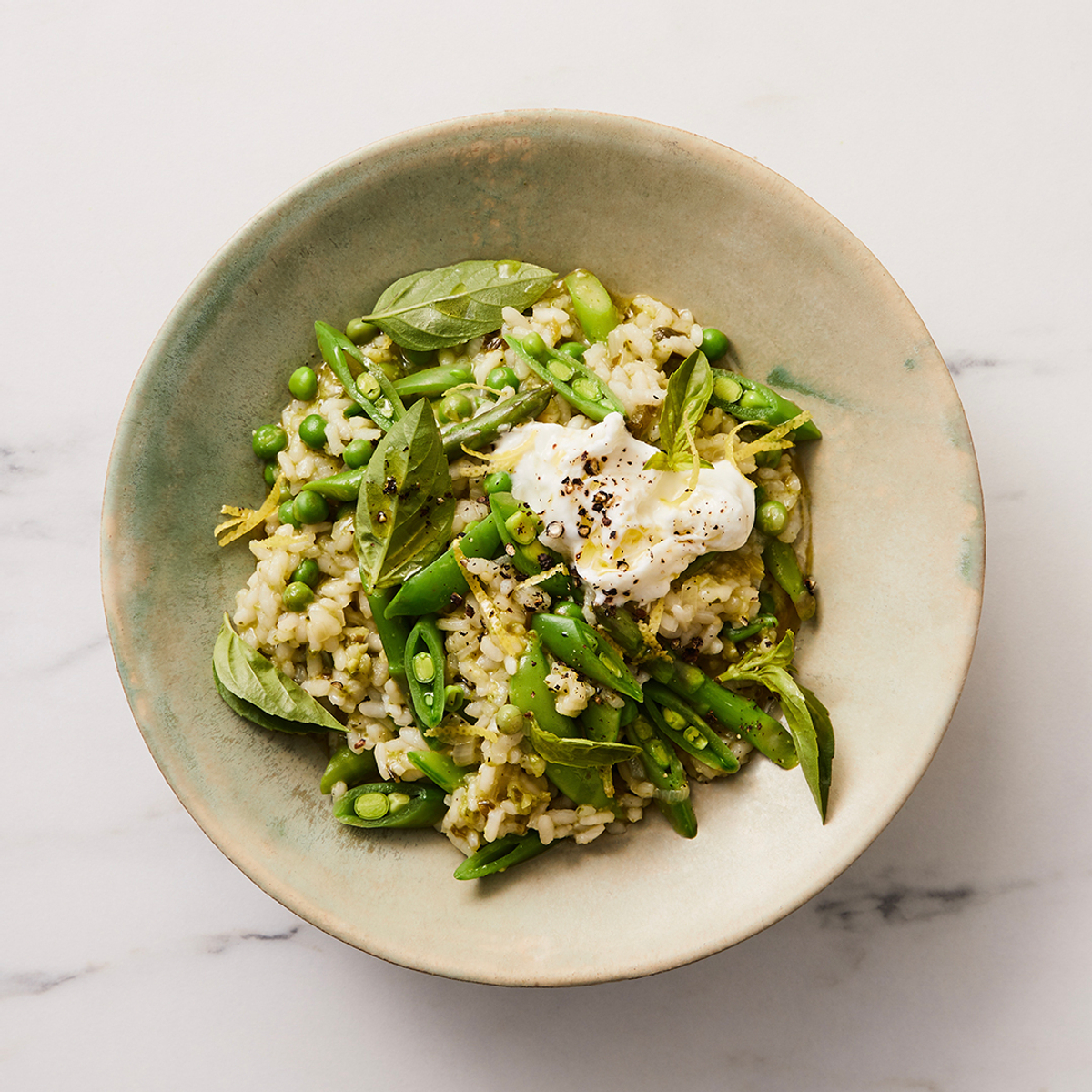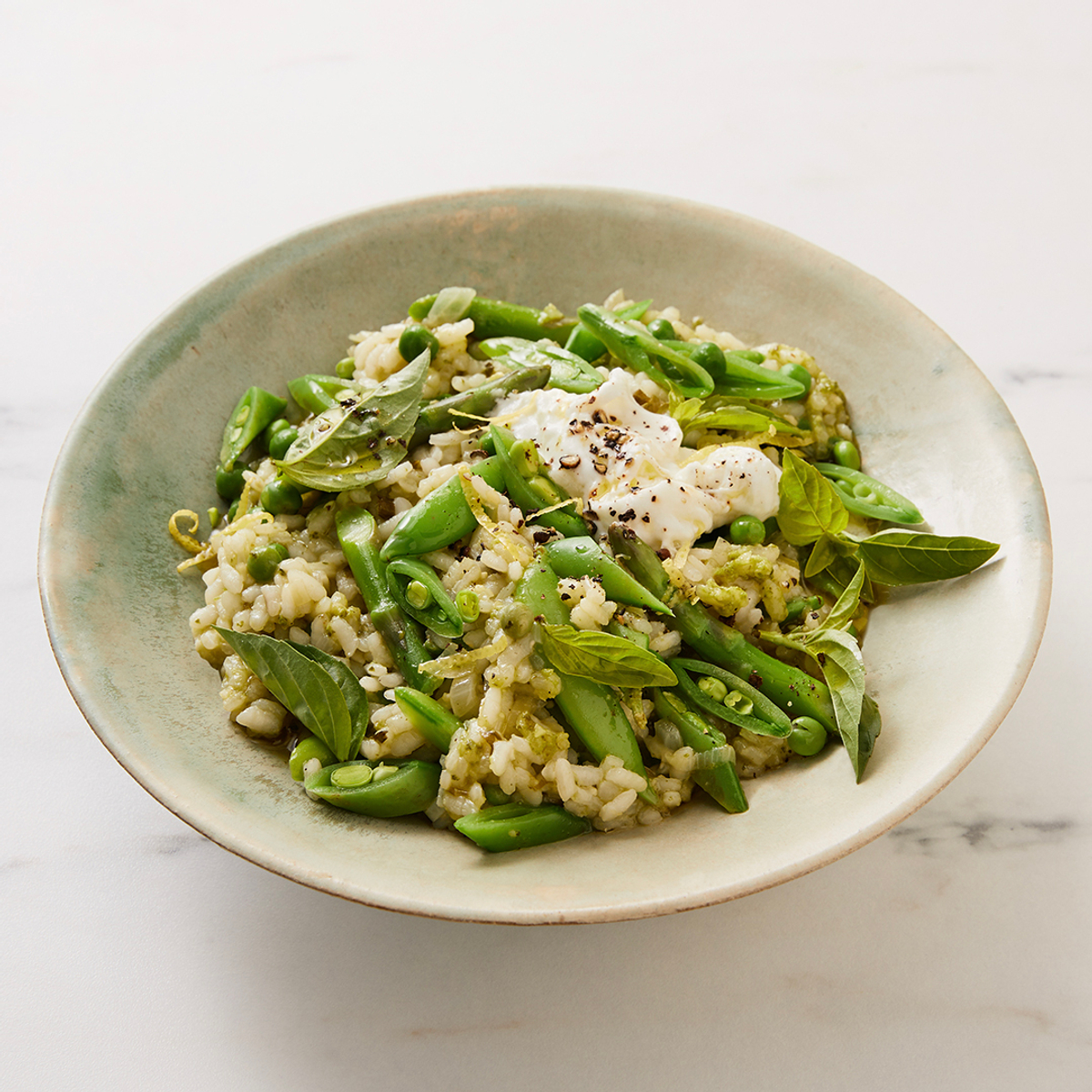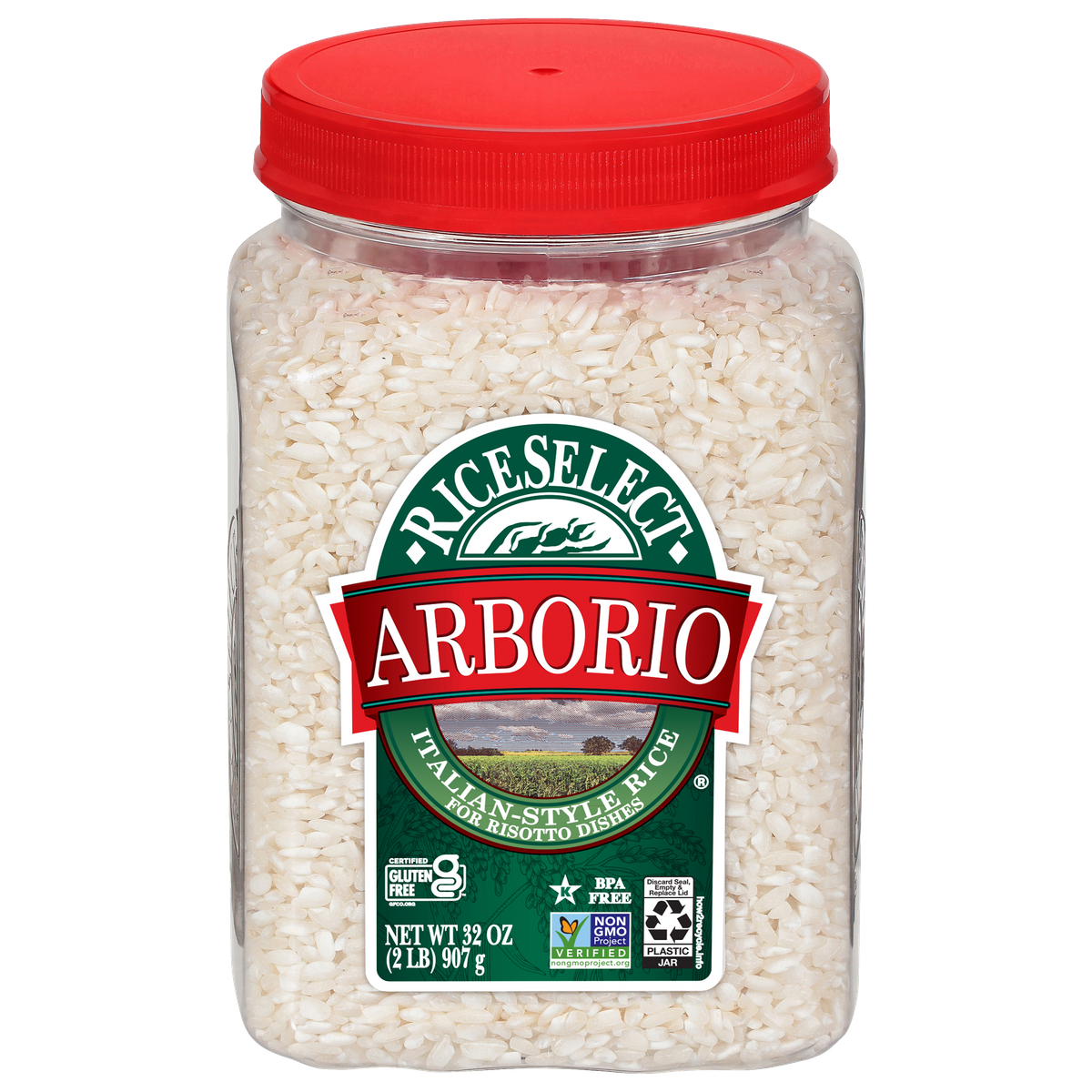Ingredients
- Risotto
- Dandelion Pesto
- Garnish
Instructions
Pour broth into saucepan; stir in bay leaves and bring to simmer. Reduce heat to low to maintain heat.
Heat oil in large high-sided skillet set over medium heat; cook shallots, green onions and garlic for 3 minutes or until shallots are translucent and tender. Stir in rice, salt and pepper; cook for 2 minutes or until well coated. Pour in wine; cook, stirring constantly, until most of the liquid is absorbed.
Stir in 1 cup broth; cook, stirring frequently, until broth is absorbed. Repeat with another cup of broth. Stir in asparagus, sugarsnap peas, watercress and peas. Add broth, 1 cup at a time, stirring until all of the liquid is absorbed before adding the next addition, until rice and vegetables are tender, about 20 minutes. (If risotto is dry, stir in enough broth or water for desired consistency.)
Meanwhile, in food processor, pulse garlic until minced. Add dandelion greens, basil, oil, pine nuts, Parmesan, salt and pepper, pulse until smooth.
Stir pesto into risotto. Cook for 1 minute or until heated through. Stir in half of the lemon zest, and juice. Divide among 4 bowls. Top with mozzarella and remaining lemon zest. Garnish with torn basil.
Recipe Tip
To cook in a rice cooker: After coating the rice in step 2, transfer rice mixture to rice cooker. Add in wine, allow to soak into the rice for a minute. Add broth and gently stir ensuring that all ingredients are evenly distributed. Close the rice cooker and set it to the regular cooking mode. Cook for 20 minutes, but check for doneness around 15 minutes.
Spring Greens
Spring is an opportune moment to stop, smell the flowers and appreciate everything growing and rejuvenating around you. With vibrant colors and so many fresh ingredients to add into meals, it just makes sense to use spring vegetables and produce in all kinds of ways, whether it be in one of our Pearl Couscous recipes, in a risotto, homemade pesto or a refreshing salad like this Green Goddess Salad with Couscous.
This incredible risotto recipe has spring greens and vegetables added into every step, starting with a delicious base of sautéed shallots, green onions and garlic. Once the rice is toasted and the warm broth is added in, this recipe calls for vegetables like asparagus, sugar snap peas, watercress leaves and fresh peas. While we’ve chosen a varied assortment, feel free to get creative and use what you have local to you or on hand. A few additional options are bok choy, spinach, arugula, kale or radicchio.
Homemade Pesto
While traditional pesto is made with fresh basil leaves, oil, pine nuts, Parmesan cheese and garlic there are many ways to increase the flavor and texture. Simply use half basil and half arugula, spinach, watercress, kale or any other leafy greens. The pine nuts can also be substituted for walnuts, cashews, sunflower seeds or other nuts.
Make your own traditional pesto for this Pesto Chicken Risotto, or use dandelion greens with basil for this delicious recipe. However, for a fun alternative, basil oil can be made to drizzle on top, like in this Sweet Corn, Parmesan and Mascarpone Risotto.
How To Make Creamy Risotto
While there are an infinite number of ways to recreate Traditional Italian Risotto, there are a few essential steps that cannot be missed no matter what.
It’s necessary to use the right rice variety, for best results, use RiceSelect® Arborio Rice on account of its higher starch content. In contrast to long grain rice, the medium grains of arborio release their starch when stirred with heat and liquid, creating that signature creamy texture.
Another important step is to incorporate warm broth rather than room temperature or cold. This is to avoid the pan and rice from cooling down too soon and leading to a mushy texture.
Whatever you choose to create, serve up a bit of spontaneous brilliance with RiceSelect®. For more recipes and to have your questions answered, for example is Orzo rice? You can check our website!



